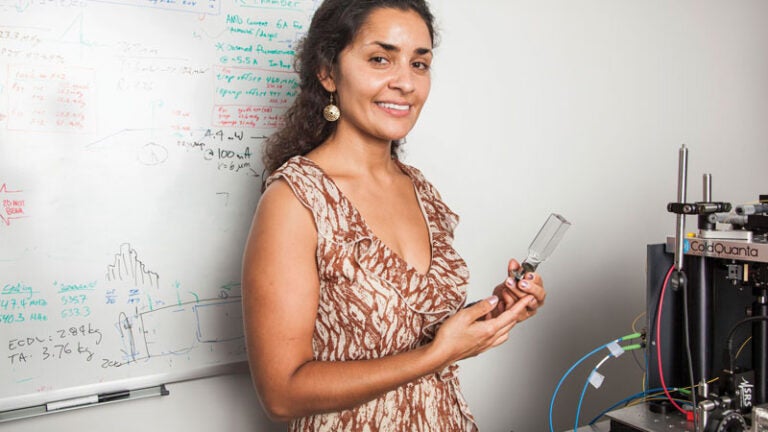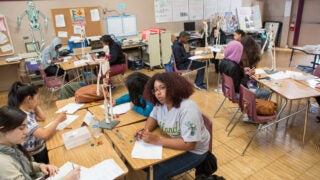
Anita Sengupta (Photo/ Noe Montes)
Train Travel at Supersonic Speed? A Trojan Alumna at Hyperloop Hopes to Make it Possible
USC Viterbi alumna Anita Sengupta works on a high-speed transportation system that’s like “a spacecraft flying on the ground.”
How fast would your commute be if you could travel at 700 miles per hour?
It’s a pace once only imaginable aboard a plane, but USC alumna Anita Sengupta is helping to take train travel to nearly supersonic speed.
“A new form of transportation hasn’t been developed in more than 100 years,” says Sengupta MS ’00, PhD ’05, senior vice president of systems engineering at Virgin Hyperloop One. The company’s game-changing idea for a more energy-efficient high-speed transportation system? Eliminate aerodynamic drag with an electromagnetically levitating vehicle inside a vacuum tube. “The best analogue is like a spacecraft flying on the ground,” she says.
Sengupta is uniquely poised to help bring aerospace technology down to earth. The USC Viterbi School of Engineering adjunct research associate professor of astronautical engineering is an expert in electromagnetic propulsion. She was also mission manager of NASA’s Cold Atom Laboratory, a three-year project to cool atoms down to nearly absolute zero. The Cold Atom Laboratory’s findings will provide a deeper understanding of matter and how complexity arises in the universe starting at the subatomic scales.
“As an engineer and a woman leader in tech, having a job that helps people and the planet is the most fulfilling job I could ever hope for,” Sengupta says.
Virgin Hyperloop One’s “terrestrial spacecraft” isn’t just a buzzworthy pipe dream; a fully operational version exists at the company’s Las Vegas test site. Plus, it can operate with a zero-carbon footprint. It has the potential to transform daily commutes, cargo and shipping, passenger travel and infrastructure, all while solving congestion problems, eliminating carbon dioxide emissions and creating a new economy, Sengupta says.
To put myself out there as a woman of color enables me to show people from underrepresented groups they can do this, too.
The company has set an ambitious goal to be production-ready by 2023. There have been numerous test runs on its Nevada desert track, and last December researchers set a new record, achieving 240 miles per hour within seconds.
It’s an exciting time for Sengupta, but she still makes room in her schedule for a few personal passions: flying single-engine airplanes, teaching fellow Trojans how to design spacecraft and promoting STEM professions to middle school students. “In our society, children don’t get enough exposure to people working in these professions who look like them,” she says. “To put myself out there as a woman of color enables me to show people from underrepresented groups they can do this, too.”
She wants to not only encourage minorities to pursue STEM careers, but also push them into higher ranks to ensure a steady pipeline of future talent. “That’s only going to happen if more women are in positions of leadership so we can ensure organizations embrace diversity,” she says.
Through engineering, more women could play a part in changing the world, even if it’s not at 700 miles per hour. Says Sengupta: “I want them to be in charge of their own destiny.”



